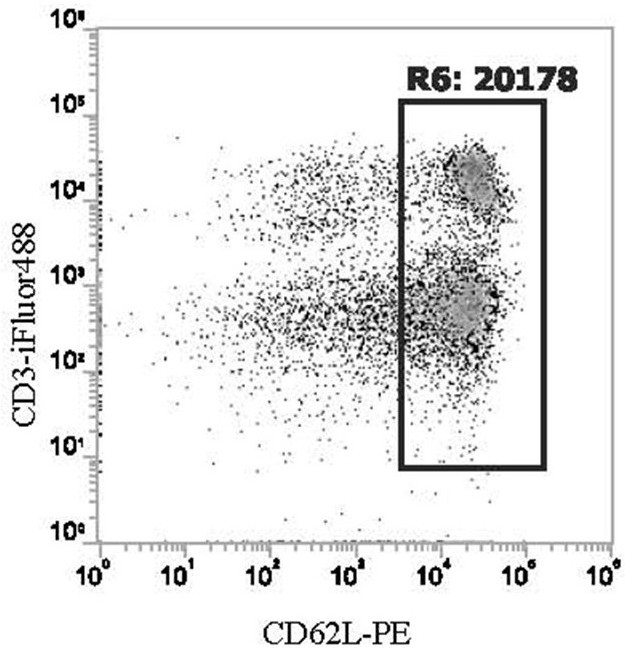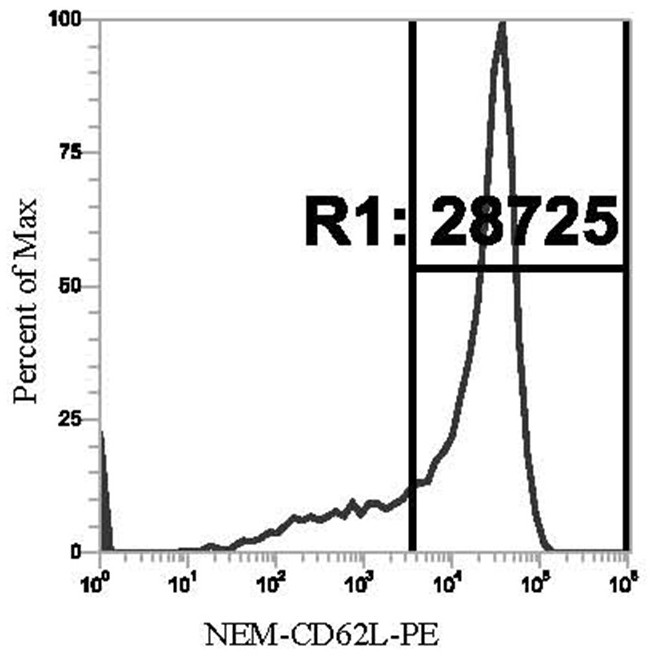Preparation method of phycoerythrin immunofluorescence probe
A phycoerythrin and immunofluorescence technology, applied in the field of immunology, can solve the problems of weak positive signal, strong background signal, and less phycoerythrin of immunofluorescence probes, so as to improve labeling efficiency, strong positive signal, and improve signal-to-noise than the effect
- Summary
- Abstract
- Description
- Claims
- Application Information
AI Technical Summary
Problems solved by technology
Method used
Image
Examples
Embodiment 1
[0060] This example uses anti-mouse CD62L monoclonal antibody [MEL-14] (hereinafter referred to as CD62L antibody) as the target protein, and introduces a method for preparing a phycoerythrin immunofluorescent probe. The preparation method includes the following steps:
[0061] (1) Block the free sulfhydryl groups on the target protein;
[0062] Specifically include:
[0063] (1.1) After taking out the 50mM NEM from the low temperature state, place it in the room temperature environment first, and then open the bottle cap when the temperature of the bottle is balanced to room temperature, so as to avoid condensation in the bottle;
[0064] (1.2) Add 1.4μl 50mM NEM solution (n(Ab):n(NEM)≈1:50) to 200μg CD62L antibody, mix well, and react at room temperature above 25℃ for 1.5h;
[0065] In this step, the NEM molecule binds to the free sulfhydryl group in the CD62L antibody molecule to block the free sulfhydryl group in the CD62L antibody molecule;
[0066] (1.3) Transfer the r...
Embodiment 2
[0094] Using the anti-mouse CD4 monoclonal antibody [GK1.5] as the target protein, the same method as in Example 1 was used to prepare the phycoerythrin immunofluorescence probe NEM-CD4-PE.
Embodiment 3
[0096] Using the anti-mouse CD8 monoclonal antibody [53-6.7] as the target protein, the same method as in Example 1 was used to prepare the phycoerythrin immunofluorescent probe NEM-CD8-PE.
PUM
 Login to View More
Login to View More Abstract
Description
Claims
Application Information
 Login to View More
Login to View More - R&D
- Intellectual Property
- Life Sciences
- Materials
- Tech Scout
- Unparalleled Data Quality
- Higher Quality Content
- 60% Fewer Hallucinations
Browse by: Latest US Patents, China's latest patents, Technical Efficacy Thesaurus, Application Domain, Technology Topic, Popular Technical Reports.
© 2025 PatSnap. All rights reserved.Legal|Privacy policy|Modern Slavery Act Transparency Statement|Sitemap|About US| Contact US: help@patsnap.com



